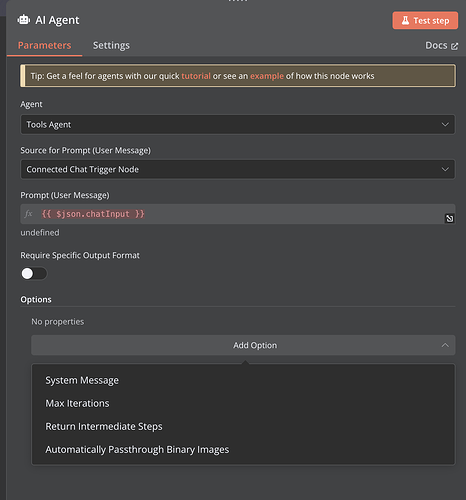Hi, I’m using an AI Agent connected with CLAUDE.
Is it possible to include multiple attachments in the AI call?
Information on your callin.io setup
- callin.io version: latest
- Database (default: SQLite): default
- callin.io EXECUTIONS_PROCESS setting (default: own, main): main
- Running callin.io via (Docker, npm, callin.io cloud, desktop app): npx
- Operating system: Debian 12
Hello - Could you please specify the type of attachment you're referring to? If your goal is to use the AI Agent, you can transmit images as binary data.
For extracting audio, PDF, or other file types, there are more specialized nodes available. For audio, for instance: callin.io Audio operations | callin.io Docs
I've also created some examples using Gemini for processing PDFs and images here:
Kindly provide more details on your specific requirements, and I'll be happy to offer further assistance.
Hi, I'm looking to convert PDF or TXT files to images as well. However, PDF and TXT are my primary focus.
Can I utilize the "binary image" field for this purpose?
Thanks.
This is possible if you first convert it into an image. As far as I know, that's the sole method if you intend to utilize the agent node.
My suggested approach would be:
- If the layout isn't critical and the PDF lacks graphics → simply read the PDF for text, and you won't require an attachment.
- If you need to extract specific data from the PDF, you might consider using a tool like Stirling PDF - PDF to Image.
- After obtaining the image, you can send it via the agent as an attachment by enabling "Automatically Pass through Binary Images".
Hi, I have the same question: how to attach a 2-page 'knowledge' to a callin.io or AI Agent node.
If I understood correctly, the simpler flow is:
Trigger > PDF Reader (standard document) > callin.io node (with trigger variable value and PDF Reader standard doc).
- Am I understanding correctly?
- If it's another type of doc (e.g., Text…), use the 'binary', right?
Thanks
I believe you would typically upload a binary file. If it's just plain text, you can read it directly. For more complex content, you could use an LLM to preprocess it (e.g., describe images, tables, etc.), extract structured data, or parse it into markdown – whatever best suits your agent's use case.
